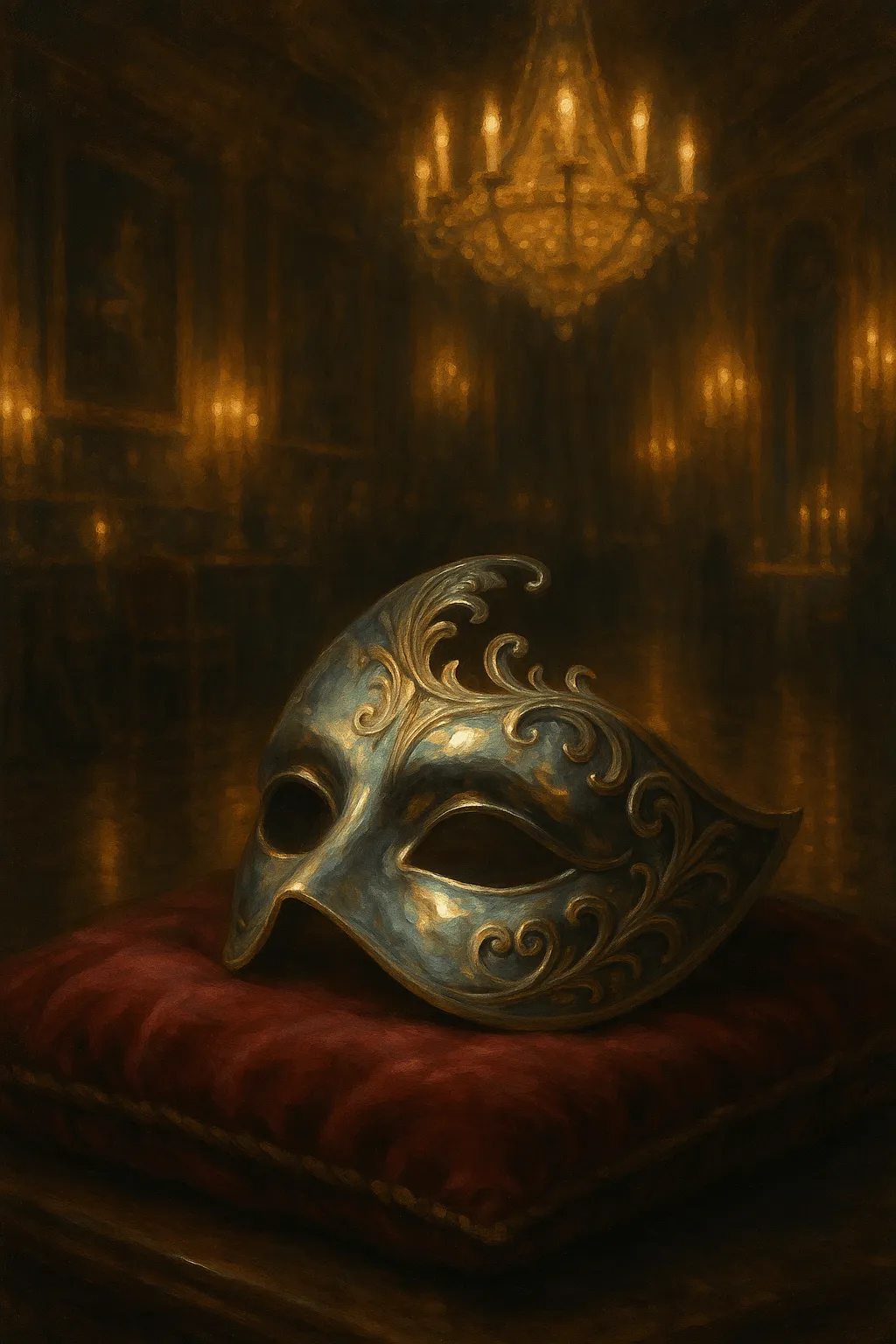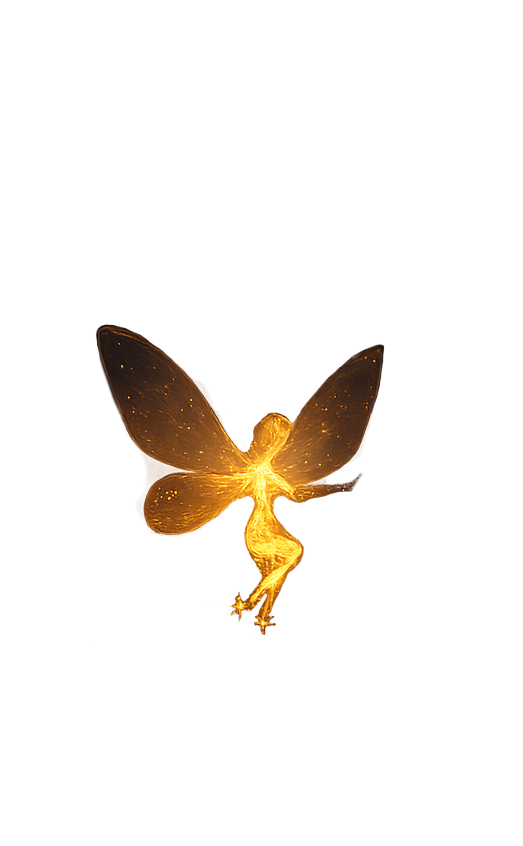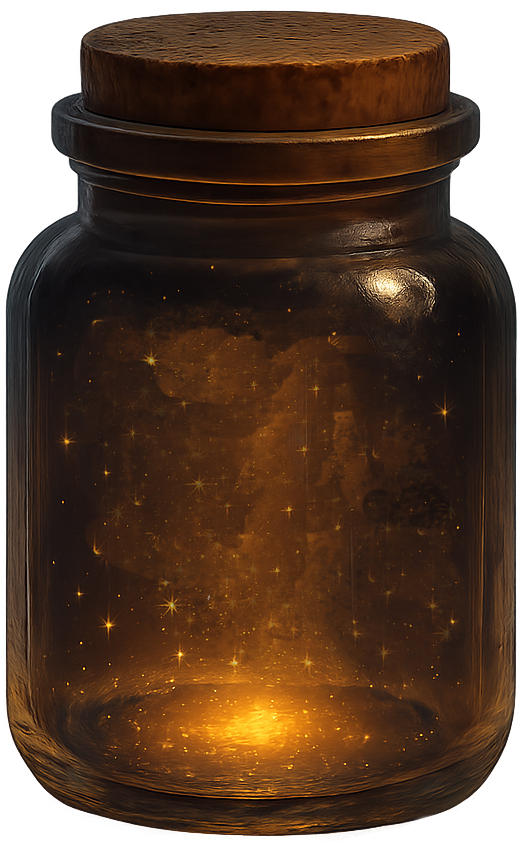
Each glamour is a lie, but some lies are worth remembering.
In the chandeliered heights of ancient elven society, where every gesture was a language and every silence a gambit, few artifacts held as much cultural weight—or treachery—as the Ballroom Mask. Born from an age where illusion was not only art but etiquette, these enchanted masks were crafted not for war or work, but for the theater of court itself. Within those mirrored halls, where nobles danced on marble floors under spells of suspended time, one’s face was rarely one’s own.
 The mask itself is delicate—too light for wood, too warm for porcelain. Crafted from materials long lost to common hands—petrified lotus bark, powdered opal, dream-harvested silk—each mask is a singular creation, imbued not just with enchantment but intent. When brought to the face, whether fastened or simply held, the magic within activates. Flesh yields to illusion, and the wearer becomes something else entirely. The change is instantaneous yet seamless, and it extends beyond mere appearance: gait, voice, scent, even subtle magical resonance are cloaked by the glamour. To all senses save the wearer’s own, they are utterly transformed.
The mask itself is delicate—too light for wood, too warm for porcelain. Crafted from materials long lost to common hands—petrified lotus bark, powdered opal, dream-harvested silk—each mask is a singular creation, imbued not just with enchantment but intent. When brought to the face, whether fastened or simply held, the magic within activates. Flesh yields to illusion, and the wearer becomes something else entirely. The change is instantaneous yet seamless, and it extends beyond mere appearance: gait, voice, scent, even subtle magical resonance are cloaked by the glamour. To all senses save the wearer’s own, they are utterly transformed.
 Each mask carries a preset likeness. Some reflect historical figures—legendary duelists, famous muses, or long-dead queens. Others offer more generic guises: a faceless noble, a wandering minstrel, a ghost-eyed oracle. A handful are more obscure, rumored to confer visages that were never real to begin with—faces from dreams, stories, or the minds of long-dead artisans. It is not always clear how or why a mask holds the likeness it does, but among elven archivists, it is believed the masks remember. That they choose their images not at random, but in response to the character of the one who wears them.
Each mask carries a preset likeness. Some reflect historical figures—legendary duelists, famous muses, or long-dead queens. Others offer more generic guises: a faceless noble, a wandering minstrel, a ghost-eyed oracle. A handful are more obscure, rumored to confer visages that were never real to begin with—faces from dreams, stories, or the minds of long-dead artisans. It is not always clear how or why a mask holds the likeness it does, but among elven archivists, it is believed the masks remember. That they choose their images not at random, but in response to the character of the one who wears them.
 The practice of mask-wearing began as a game among the highborn—a subtle test of wit and memory during masquerades, where recognizing a soul beneath the disguise became an act of social mastery. But as centuries passed and the politics of the court grew more serpentine, the masks evolved into tools of espionage, seduction, and even assassination. Entire wars have hinged on the stolen identity of a single masked figure, and more than one bloodline has been quietly erased by a face that did not belong.
The practice of mask-wearing began as a game among the highborn—a subtle test of wit and memory during masquerades, where recognizing a soul beneath the disguise became an act of social mastery. But as centuries passed and the politics of the court grew more serpentine, the masks evolved into tools of espionage, seduction, and even assassination. Entire wars have hinged on the stolen identity of a single masked figure, and more than one bloodline has been quietly erased by a face that did not belong.
 To wear a Ballroom Mask without permission within an elven court is an insult of the highest order. To be unmasked is to suffer social death, or worse—magical punishment woven into the mask itself. Outside the elven realms, however, these masks have taken on stranger lives. They are traded in black markets, stolen from dusty vaults, or found sealed within magically locked chests—objects of mystery and fear among common folk, often mistaken for cursed relics. Many a traveler has stumbled upon one in a trove, used it to assume a false identity, and vanished into myth.
To wear a Ballroom Mask without permission within an elven court is an insult of the highest order. To be unmasked is to suffer social death, or worse—magical punishment woven into the mask itself. Outside the elven realms, however, these masks have taken on stranger lives. They are traded in black markets, stolen from dusty vaults, or found sealed within magically locked chests—objects of mystery and fear among common folk, often mistaken for cursed relics. Many a traveler has stumbled upon one in a trove, used it to assume a false identity, and vanished into myth.
 Some masks are more than relics. They have names. They have reputations. A rare few are said to bond with their wearer, refusing to be removed until their purpose is fulfilled. Others whisper, not with words, but with urges—a pull to perform, to deceive, to become. These masks are rare, and dangerous, and usually destroyed… or elevated to artifact status by those who dare study them.
Some masks are more than relics. They have names. They have reputations. A rare few are said to bond with their wearer, refusing to be removed until their purpose is fulfilled. Others whisper, not with words, but with urges—a pull to perform, to deceive, to become. These masks are rare, and dangerous, and usually destroyed… or elevated to artifact status by those who dare study them.
Then there are the nameless ones—the masks that show no known face. Those who wear them report becoming people who never existed: a laughing woman with rose-gold eyes, a child in imperial armor, a man with a smile too wide. They vanish from mirrors. They speak languages no one knows. And when the mask comes off, sometimes… not everything does.
Thus, the Ballroom Mask endures—not merely as a tool of transformation, but as a symbol of a culture where truth was once considered vulgar, and beauty was more powerful when borrowed.
The following magical heirlooms are fictional and lore-based in nature. Each one is an affiliate link to a real-world item on Amazon that we've hand-selected to complement this artifact's lore.


If you click a link and buy an item, we may earn a commission.It costs you nothing extra, but can help keep this little corner of the internet glowing.
What does this mean?
Never empties, rarely judges—perfect for parties, peace talks, and poorly planned quests.

Tonight, you can choose to be whoever you want to be.

A tome containing countless ages of invaluable wisdom. A copy can be found on the night-stand of most influential leaders.

This cracked emerald monocle nullifies petrification—but only for the first four glances; after that, it politely ceases to intervene.




